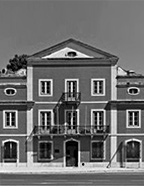

................................
The subsequent sessions of the Royal Academy, which always relied on the contributions of the appointed academics, saw a considerable increase in the questions, doubts, clarifications and even heated debates. However, none of the Histories were completed. Nonetheless, the diligence of some of these men is conveyed through the letters, catalogues and notebooks, in short, in the "papers" handed over to the censors for analysis... most of which were printed at the time. Others awaited further processing and were used when Father Luís Cardoso organised the so-called "Parish Memoirs". It is also a fact that the institution grew, benefiting from full royal protection in the form of rents, favours and ease, of which the free entry into the Archives or the Academy being entrusted with the Protection and Preservation of Ancient Monuments are examples. The activity of the Royal Academy remained highly dynamic for more than half a century, and the work of its members paved the way for a scientific history. Furthermore, having been founded to write history, the Royal Academy would also play a fundamental role as a publisher, with the privilege of being exempt from external censorship! Its last public act was in 1777, on the Queen's birthday when, as was the tradition, it gave its official speech before Queen Maria. From then on, its existence was omitted, even though it had not been extinguished.
Emerging from the still smoking ashes, its continuator, the Portuguese Academy of History, would play an equally important role, especially in terms of publications. The respective Setting up Committee, appointed by the Minister of Education, was composed as follows: Afonso de Dornelas Cisneiros, António Eduardo Simões Baião, António Garcia Ribeiro de Vasconcelos, Caetano Maria de Abreu Beirão, Luiz Teixeira de Sampaio, Manuel Maria Múrias Júnior and Possidónio Mateus Laranjo Coelho. This Committee met on five occasions, always in the Minister's office and under his chairmanship. During these meetings, various practical matters were discussed, including the choice of academics to be appointed, and the plan for the insignia, necklace and commemorative medal. Five months after work had begun, on 22 December, the Minister of Education, Carneiro Pacheco, appointed the respective Council, in compliance with Article 5 of the new Academy's statutes, which was published in Official Gazette no. 302 of 28 December. It consisted of all the members of the Setting-up Committee, but now distributed by positions:
President: António Garcia Ribeiro de Vasconcelos; Vice-Presidents: Luiz Teixeira de Sampaio and António Eduardo Simões Baião. Secretary- General: Afonso de Dornelas; Vice Secretary-General: Pedro Tovar de Lemos (Count of Tovar); Censor: Manuel Maria Múrias Júnior; Palaeographer: Possidónio Mateus Laranjo Coelho.
